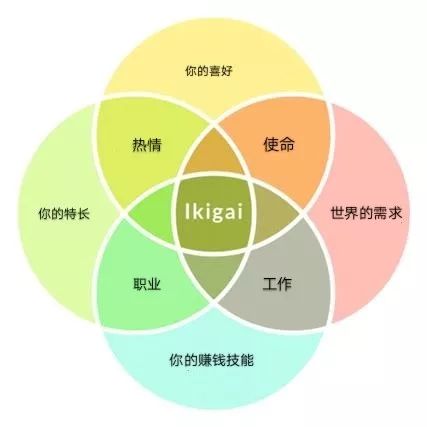After asking 100 founders, CEOs, and venture capitalists, here are some answers.
Editor’s note: This article is from WeChat public account “Redwoods” (ID: Sequoiacap), author Hong Shan.
The life of an entrepreneur has almost no time to press the pause button, right? There is always another patch to fight, another fund to raise, and another flight to catch up… This forces the entrepreneur to be both the master of time management and the pressure in the pressure cooker environment, stepping on the brakes on the entrepreneurial train It seems unimaginable.
Earlier this year, Sasha Orloff made an astonishing decision to announce his resignation as CEO and left him and his partner to co-found and develop for seven years. the company. In the next 100 days, he did something interesting: 100 coffee chats with other company founders, CEOs and investors to get advice from entrepreneurs after leaving the founding company.
Olov shares his insights and thoughts during this “coffee appointment” in this article. This includes factors that allow him to make an exit decision, how the founding CEO sees the dual nature of his role, and the wisdom he has learned from the various fields.
“In the crazy rhythm of entrepreneurship, the founders are just trying to keep up with the urgent needs,” Olof said. “But when your company has matured And when you are ready to leave, you are faced with a new and almost ubiquitous challenge: decide what to do next.”
Do you continue to learn how to manage large enterprises? Do you accept the next madness of continuous entrepreneurship? Or are you ready to try a completely new role?
Olov’s experience is valuable to the founders of any stage, from how to think about their personal career development to driving uncertainty during the inevitable transition period. Even if you are not an entrepreneur, you will get valuable advice on career transition.
Sometimes, one way to move forward is to retreat behind the scenes
“Although congratulations on the achievements of world-class people like Bezos, they have become the focus of attention. But there are also characters like Larry Page and Sergey Brin, who are When appropriate, give the reins to others. In fact, it is not the only option for entrepreneurs to remain CEOs, and they don’t have to put themselves into a successful template,” Olof said.
When he thinks this way, the problem becomes clear: “My company has finally reached this stage – the needs of the company have differentiated from my strengths and my interests.”
In the beginning, the responsibilities of the founder and CEO were the same. But after a few years, these two roles are getting more and more different. Olof said: “As a founder, what I like to do is to turn market demand into entrepreneurial ideas, find products and market deeds and develop it. Now my company has reached a certain maturity, I have to do it completely. Different things: As we grow, more complex issues require different expertise than the experience I gained as a founder in the past. Although my enthusiasm for the company has not changed, I am not sure this is what I want to continue. Work done.”
Why the “Founder CEO” may not be everyone Suitable roles?
▨ Responsibilities:As a founder, your motivation comes entirely from trying to solve problems and finding a market that suits your product. You have the biggest Control. But when you are a 7-year-old company CEO with 250 employees, you spend more time thinking about capital allocation and company resources. This requires a completely different set of skills that is completely different from the entrepreneurial tools that you have honed at the beginning of the company.
▨ Risk: Entrepreneurs are born with a strong risk appetite, enjoy the excitement of curiosity and big adventures, and dare to bet In an idea that doesn’t seem to be successful. But if you are a well-developed company CEO, you can’t take too much risk, because if you are not careful, you will actually lose something.
To some extent, the “founder”’s innovation and risk-taking qualities have changed during the company’s growth.Not so useful, and the professionalism and discretion of the CEO has become more important. If you find that something you like is different from what the company needs, this is actually a “natural phenomenon.” As the company matures, people with more extensive experience than the founders will bring more value to shareholders.
How to get your message off is not bad news
From the beginning, internal communication strategies are your chance to control storytelling.
▨ Take the time to plan the process of information disclosure. The longer you plan ahead, the smoother the transition and the more likely you are to find the best alternative. Oloff first discussed the issue with the co-founder and then privately communicated with the board and media executives six weeks in advance, rethinking how to post the message and how to use the appropriate textual description.
▨ Time to give everyone thought and reaction. Olov specially arranged the release time so that employees can come to communicate on issues they care about. After the announcement on Wednesday, Olof used the lunch time on Thursday to answer questions and answered some questions submitted by employees anonymously. On Friday, I spent a happy afternoon tea with all the staff, and officially said goodbye and answered some of the remaining questions.
▨
Humanization. Olov initially drafted an email that was ready to be sent to the company, but in the end he chose to read the decision to the entire staff. “When you are in the transition period, it’s okay to show your emotions and fragility. In that happy hour on Friday, I wore a shirt with a company LOGO, indicating that I would be involved as a board member. And still very concerned about the future of the company.”
Smart of 100 cups of coffee
In the next 100 days after leaving the startup, Olof met with many founders, CEOs, entrepreneurs, investors, professional coaches and other business people, hoping to hear more about it. How to start the proposal again.
5 possible paths after the first venture
▨ Join the ranks of consecutive entrepreneurs. This means basically starting from scratch.
▨ Sit on the other side of the road show. Become an investor, you use your experience and experience to support other entrepreneurs.
▨ Train a rising star as an expert. For example, join an investment committee, examine different companies, research the market, and be inspired to start your next business idea.
▨
Go to a big company.
▨ Join a fast-growing startup and become the second-in-command.
Evaluate a new business idea
For entrepreneurs who still have entrepreneurial ideas, Oloff suggests finding directions by asking yourself a series of simple questions:
▨ What are the biggest problems on the market yet?
▨ What personal skills, strengths or insights do you need to help solve this problem?
▨ How do you turn it into a viable business idea?
The broader conception and imagination framework
For a larger level of career transformation planning, a framework that will explore multiple possibilities will be useful. A coffee appointment meets Olof and introduces ikigai
(The meaning of life) model, it can help you find something that will bring personal professional satisfaction. In the ikigai diagram, the role that gives you goals and passions will be at the center of the four priority areas.
Most people suggest listing three lists:
▨The skills you want to develop
▨The industry you want to work in or the experience you want to have
▨ Principle
“Once you list these three lists, you


